Two summers ago the greens at Avondale Golf Club were struggling. Sydney’s hot and humid climate had stressed them to the point where they needed substantial amounts of water each day to remain playable. It was an undesirable predicament given Avondale’s reputation as one of the most prestigious private clubs in the country.
On one morning, superintendent David Warwick was hand-watering the problematic 11th green. Long-time member Gary Stone had been walking to the next tee when he stopped, turned and remarked: “That water stinks. In our industry that’s bacteria. You need oxygen in that water.”
Quick as a flash, Warwick replied: “Stoney, you’re a butcher. I’m a greenkeeper.” In other words, bugger off and mind your own business.
For Stone, however, it was his own area of expertise. As a long-time wholesaler and processor of meat he had a vast knowledge about one of the meat industry’s biggest problems – parasite control. Viruses, bacteria and fungi had built up resistance to all the chemicals used to clean drains and pipes. Supplying 40 tonnes of meat a week to supermarkets, he knew that one bad batch (infected with listeria) would lead to a recall nightmare and the loss of hundreds of thousands of dollars.
Little did they know it at the time, but that exchange between Stone and Warwick would be the catalyst that transforms turf maintenance in Australia, and potentially around the world.
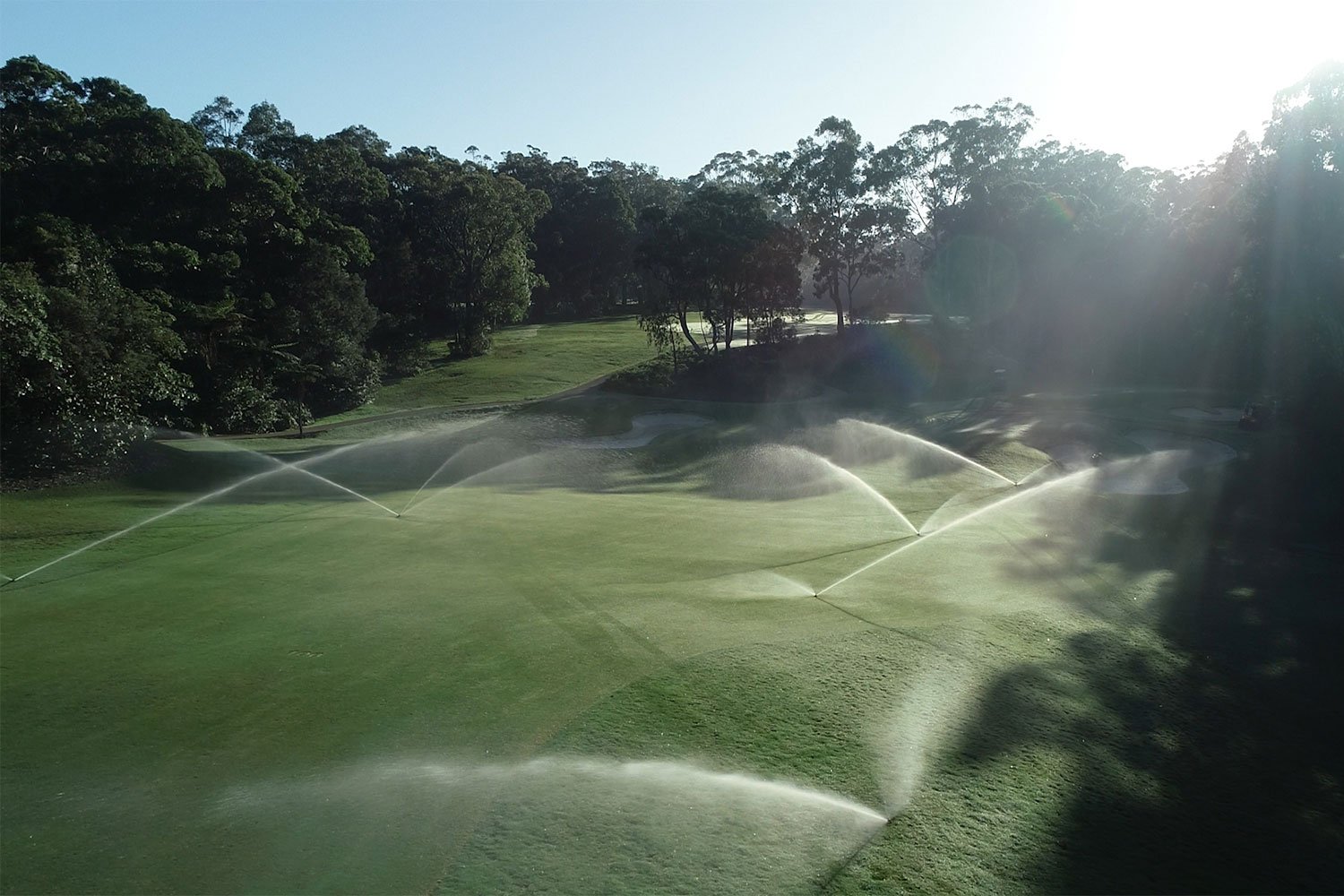
From Meat Distributor To Green-Tech Crusader
By early 2016, Stone had spent almost 13 years on a journey to devise a way to clean up the meat industry. Coming from the food industry, Stone was seeking a better way to ensure the control of bacteria throughout production. Understanding that ozone is 3,500 times quicker and 70 times stronger than chlorine, he decided to explore how to effectively and cost-efficiently use it in the cleaning process to ensure pathogens were destroyed.
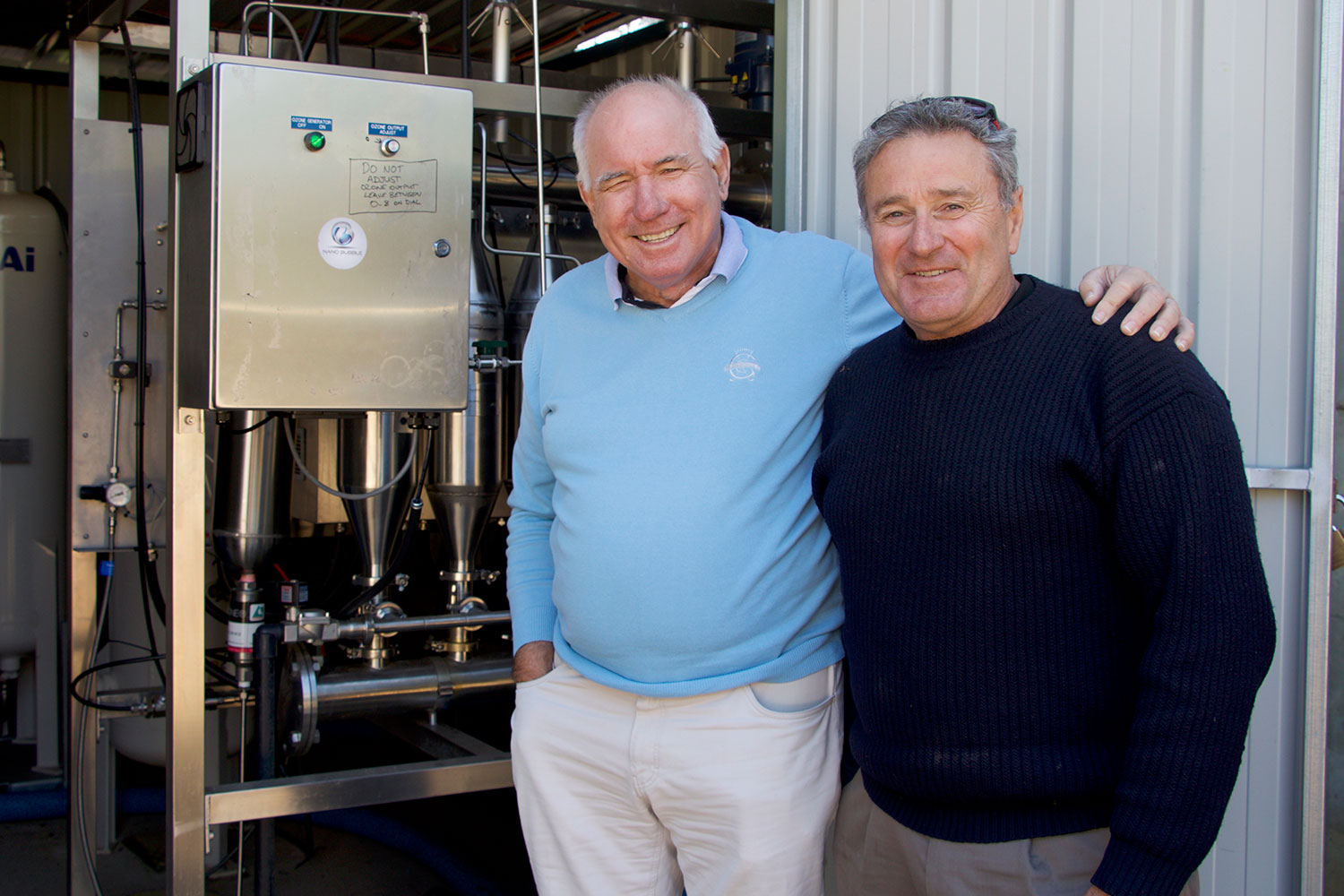
Stone founded Nano Bubble Technologies (NBT), a team engineering a method of harnessing gases in liquids at unbelievably high volumes. They started with ozone and oxygen, two gases with direct application to Stone’s other businesses, and eventually worked out a way to achieve levels greater than 30 parts per million (ppm) of these dissolved gasses – something that some scientists had said was impossible.
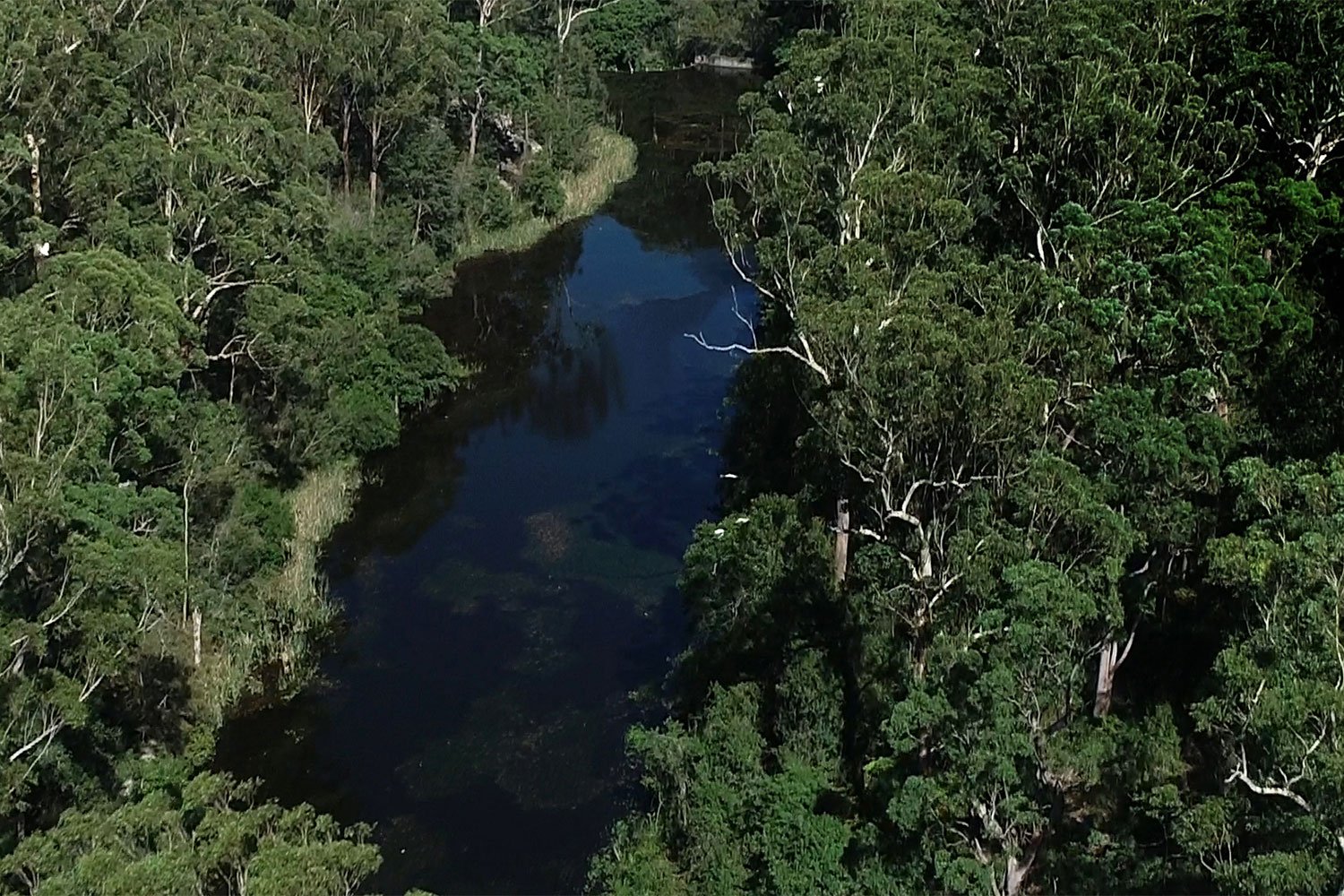
And it’s all done through “nanobubbles”. Nano technology is a broad term used to describe the manufacturing processes conducted on the nanoscopic scale. It’s more widely recognised for its applications in high-performance engineering such as in the most advanced fighter jets and Formula 1 racing cars.

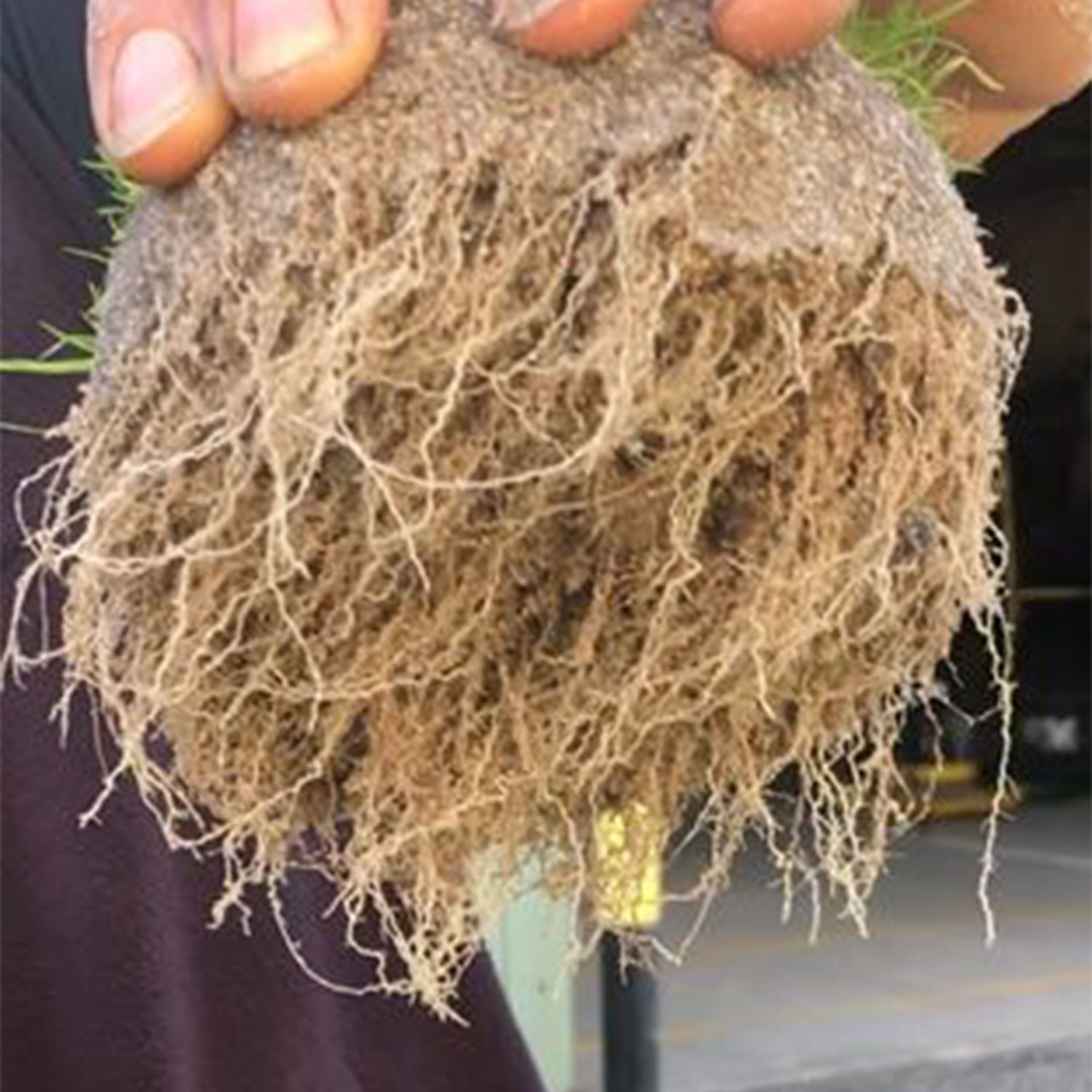
The first commercial use of Stone’s new technology was at a hydroponics farm that had a pythium problem in its water. Stone’s team introduced the nanobubble ozone to the water supply and was successful in destroying the pathogen. Using one of its patent-pending injectors, NBT cleared 100 percent of the pythium in the water that the farm was using to irrigate hydroponic plants such as basil, coriander and rocket.
At the same time, the farm manager enquired if he could introduce oxygen into his irrigating water. Espousing the benefits of oxygen in water, Stone replied that pythium wouldn’t have an impact on the plants if oxygen levels were above 5ppm. Furthermore, it would have a major benefit on plant growth. And the results proved Stone’s assertion. By adding oxygen, the plants grew longer and stronger roots, which led to healthier plants and greater yields.
Back at Avondale, Stone told Warwick about what they had done at the hydroponic farm. He believed the club’s turf problem would be solved if they could clean up Avondale’s irrigation system and get more oxygen into the water. Warwick was intrigued enough to ask Stone to provide some cleaned and oxygenated water to conduct some trials.
Avondale sourced its irrigation water from a dam in a gully behind the 10th hole. Since that dam was built in the 1960s, a large amount of leaf mould and other rubbish had settled in the bottom. As that biological matter breaks down, it consumes oxygen in the water and creates conditions conducive to pathogens, funguses and parasites.

Beneficial bacteria survive in an oxygen-rich environment whereas pathogenic fungi and bacteria thrive in anaerobic conditions – very low or no oxygen where there is weakness and decay – typically things like pythium and nematodes.
Pythium is very bad news for superintendents because it can kill a green within 24 hours. It’s a fungus-like parasite that causes root-rot, killing plants and farm crops while living and feeding off decaying roots.
Because golf clubs build intricate irrigation systems, they are essentially giving pythium a super highway to impact the entire course.
The water-borne spore weakens the root system of greens. And when the root system is weakened, greens need to be damp all the time to prevent losing them. Hence, the greens need watering more often. A weak root system also increases the chance of foreign grasses, such as Poa annua, getting into the putting surfaces.
Pythium’s worst impact lasts until the end of March when the weather cools down and oxygen in the water finally begins to increase. It thrives in a low-oxygen environment and the high summertime temperatures in Australia remove even more oxygen from the water. In a nutshell, that’s basically why turf grass needs more oxygen.
 Research has shown that water with less than 5ppm of dissolved oxygen can be detrimental for plant growth. In summer, Avondale’s irrigation water contained less than 1ppm of dissolved oxygen, while in mid-winter it was approximately 3ppm. Hence, the dam’s pathogens and bio matter had a huge impact on the quality of the water supply.
Research has shown that water with less than 5ppm of dissolved oxygen can be detrimental for plant growth. In summer, Avondale’s irrigation water contained less than 1ppm of dissolved oxygen, while in mid-winter it was approximately 3ppm. Hence, the dam’s pathogens and bio matter had a huge impact on the quality of the water supply.
Anything above rainwater quality of oxygen (8ppm) is hugely beneficial for turf. Stone’s claim of delivering levels greater than 27ppm meant Avondale could get at least 15-20ppm to the surface of the greens (after allowing for leakage from pipes and sprinklers). It was almost too good to be true.
With nothing to lose, Warwick set up trials with plugs of turf that would compare NBT’s treated and oxygenated water against water from the club’s dam. The results were amazing. Basically, the root system was 5-6 times greater in the plugs receiving water with dissolved oxygen than what was achieved from the dam water plugs.
After the trial, Warwick brought it to the Avondale board’s attention. After much discussion, the club agreed to install a treatment plant and undertake the world’s first trial of dissolved oxygen on a golf course.
NBT engineered a treatment system to fit Avondale’s existing irrigation infrastructure. It would continually treat water pumped from the problematic dam and stored in a holding tank prior to being used for irrigation. The NBT system utilises ozone to clean bio matter and pathogens and injects additional oxygen in the form of nanobubbles. The result is clean water distributed to the turf with optimal oxygen for growth.
By treating the stored irrigation water, Avondale’s system would no longer be spreading pythium around the course. The pythium already in the soil – looking for weakness and decay to live and breed – would be driven away from the healthier root system created by the NBT-treated irrigation water.
The Importance Of Dissolved Oxygen In Water
Warwick – one of this country’s foremost superintendents – hadn’t studied the importance of oxygen to turf because until this technology was invented there was no way of really infusing dissolved oxygen into irrigation water. Over the years there had been bubblers and fad-products tried, however nothing was proven to be effective. Hence, it wasn’t taught as part of the curriculum for greenkeepers.
“It’s been a major learning curve for me,” Warwick concedes. “I’ve studied this subject just about every night in the past 12-18 months – nanobubbles, ozone and oxygen and its use in plants. It’s quite incredible.
“It’s a topic that’s very well researched in the hydroponic industry. I can’t believe it hasn’t transferred across into the turf industry. Essentially golf greens are almost like hydroponics – you’re continually running water through them with nutrients.”
In short, nanobubbles are microscopic bubbles of gas suspended in a base liquid. The NBT nanobubble injector generates between 30 and 50 million nanobubbles of gas in a millilitre of water. These nanoscopic bubbles essentially sit in between the water molecules. For different applications there are different gases. Oxygen, ozone, nitrogen and carbon dioxide are gases used in everything from agriculture to industrial sterilisation.
Unlike a macro or microbubble, nanobubbles remain in solution for extended periods of time so they can remain effective when required. Nanobubbles are so small they’ve got no buoyancy and don’t rise to the surface and dissipate into the environment.
NBT’s patent-pending nanobubble injectors create negatively charged bubbles that repel each other. This keeps them evenly distributed in the water instead of attracting towards each other and creating one big bubble that ultimately rises. Unlike regular bubbles, a single nanobubble will move randomly in a process called Brownian motion.
As Warwick explains: “Nanobubbles allow for stable, mega-saturated levels of oxygen in course irrigation water that is delivered right to your turf roots zone.
“Plants utilise oxygen, it’s what we’re trying to introduce every time we aerify or core, vertidrain, deep slice, whatever we do to our greens. Turfair – an invention from America that sucks air out of the green – replaces it with atmospheric air. Well, air is 80 percent nitrogen, 20 percent oxygen, but it’s not coming in a dissolved state.
“The plant roots don’t have lungs, they don’t breathe like humans, and so they can only absorb oxygen in a dissolved form. And what this [NBT Sports Turf Solution technology] is doing is putting dissolved oxygen into water, so it’s readily available to plant roots.”
The NBT turf solution uses an oxygen concentrator to take in air and then transfer it through a system that removes the moisture and chills the gas. It’s then put through four cylinders, removing the nitrogen to leave 94 percent pure oxygen, which is then injected into the water in the form of ozone. This kills all pathogens and bacteria. Oxygen is then injected into the water in the form of nanobubbles. In Avondale’s case, this is set between 28 and 30ppm. Bear in mind, tap water has oxygen levels of about 6-7ppm.

It’s important to appreciate that it’s the ozone treating all of the pythium, bacteria, fungi and other parasites in the water. Within minutes ozone kills nearly 100 per cent of all known bacteria and viruses. It kills by oxidising when it comes into contact with a spore. It’s not just one, it’s millions of these tiny gas-filled cavities of ozone in the water. Ozone is the third most powerful steriliser in the world.
NBT produces ozone in a generator not dissimilar to how lightning strikes occur – very, very high voltage electricity with pure oxygen (O2) passing through it. This separates the two oxygen atoms, which then individually attach to O2 molecules to form O3 temporarily. It has a natural half-life of about 20-30 minutes. The ozone and the pathogens kill each other off. So it breaks down very quickly but even faster if put into ‘dirty’ water because it’s attacking the pathogens and bio matter. Then once the third molecule of oxygen is broken off, it oxidises and reverts to O2. The only residue is pure oxygen.
Avondale’s Story Has Created Enormous Interest
Since installing the NBT Sports Turf technology 14 months ago, Avondale’s water quality went from black/grey in colour to clear. The greens are devoid of pythium damage and the worst surfaces have had a 300 per cent increase in root density. With healthier roots, the grass growing above the surface is much healthier. And due to the increased amount of oxygen, the irrigation water is much finer and therefore Warwick has drastically reduced the use of wetting agents.
“You hear people say it all the time, ‘You’ve got to try and get some air down to those roots.’ Well, you’re trying to get oxygen down there, not air. So this is delivering higher levels of oxygen every time you irrigate. It’s particularly beneficial for clubs that have got old dams or effluent water.”
“his is delivering higher levels of oxygen every time you irrigate. It’s particularly beneficial for clubs that have got old dams or effluent water.” – David Warwick, Avondale GC
Positive results have occurred at some other pathogen-prone courses to confirm the efficacy of NBT’s Sports Turf Solutions. The Sydney-based company now has four top Australian clubs using its nanobubble-generating systems, while a number of others have requested or shown interest. (Confidentiality agreements currently prevent NBT from disclosing its clients.)
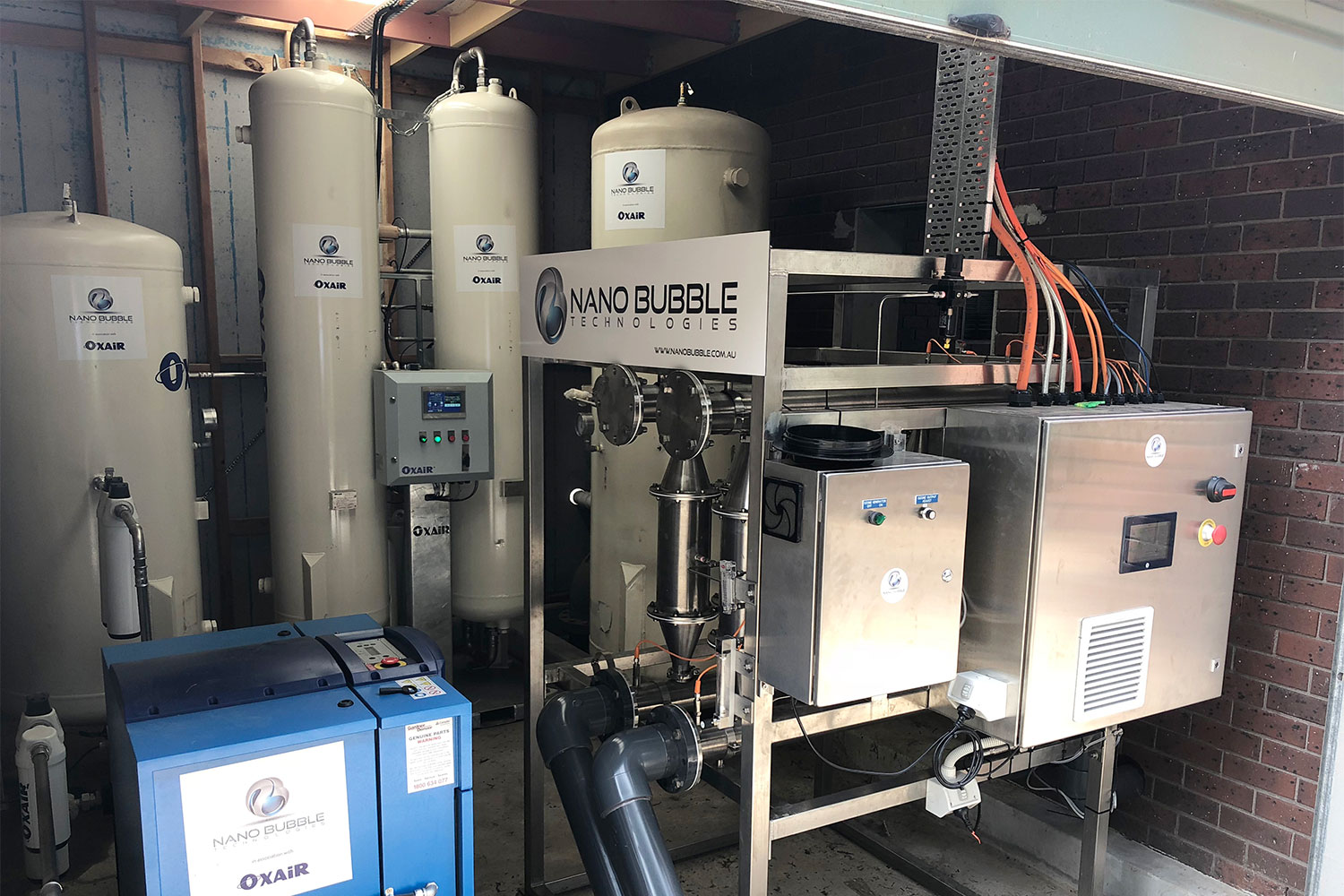
The technology is best suited for courses in hot and humid climates and with weak irrigation water resources. However, it will also benefit turf in a city like Melbourne where superintendents at leading clubs are under pressure to uphold the Sandbelt’s reputation for having the world’s purest putting surfaces.
The technology is not cheap – it may cost upwards of $300,000 to install a nanobubble-generating system depending on the quality of a club’s irrigation water. However, the human cost is even more reason to consider it. “I just want the information about dissolved oxygen out there to help fellow superintendents,” Warwick says. “I’m sure superintendents have lost their jobs just because of this very issue that they knew nothing about.”
Of course, the greatest beneficiaries are golfers. Apart from playing on much better surfaces, there is less interruption with greens being aerated, less maintenance required by the greenkeeping staff and less use of chemicals. So it’s literally a four-fold benefit.
Secret To The Success
While a patent is pending on the ‘nanobubbles’ technology, Stone had struggled initially to get traction simply because there was so little information about oxygenated water. The idea of oxygen in liquids – water, wine and the environment – is something that has been researched and trialled. However, the challenge was to hold the oxygen in a liquid (because higher temperatures dispel gas out of water).
Conventional wisdom said you couldn’t achieve dissolved oxygen levels of 30ppm in water. Stone was even accused of being fraudulent by a research developer for the wine industry. The developer said Stone’s claim defied Henry’s Law, a scientific paper that says the maximum amount of oxygen in water is 10.7ppm.
“The one thing that we’ve done is to be able to take an idea of how to create nanobubbles and be successful. And the way we have done that is by getting the gas pressures correct and the way that we infuse that through a membrane is the technology,” he says.
“And getting that correct has been a journey of 13 years. We’ve had this now for two years. So there’s been a lot of hurt and a lot of expense in that 13 years of trying to do this.”
NBT has identified five main industries where its technology has potential benefits: sports turf, green waste, wastewater, hydroponics/agriculture and cleaning in place (CIP). The practical applications can:
• Reduce the odour and greenhouse gases from compost piles
• Sterilise wastewater to make clear recycled water without using heavy chemicals
• Remove hydrogen sulphide from the top part of sewerage pipes
• Increase plant yields in hydroponics by up to 30 per cent as well as irrigate crops organically and enable the re-use of water
• Eliminate the need for heavy chemicals in cleaning that often have residual by-products
The potential appears infinite. From fish farms to government water authorities, there’s a vested interest in creating solutions to turn wastewater into clean potable water. For instance, a large textile manufacturer in North America has been in discussions with NBT to see if there’s a way to clean up the bi-product from impregnating dyes into denim jeans.
With regard to green waste, NBT has been able to break down green waste faster by creating temperatures 25°C higher than normal procedures. By adding more oxygen, NBT can treat more green waste in less time. One of the biggest benefits is that nitrogen stays in fine particles of the green waste and can now be used as fertiliser.
Fifteen years after seeking to transform the meat industry, Stone has the first commercially viable machine capable of producing nanobubbles on a vast scale. Now his attention is firmly focussed on disrupting other industries besides meat and turfgrass.
“The most valuable resource in the world today is water. And we have found a way of cleaning the water up and being able to put more oxygen in the water to change it from anaerobic to aerobic so it can be used successfully.”
“What John F. Kennedy said was anybody who can solve the water problem would solve the world’s problems. And that’s because we’re getting to a stage now where there will be – if we don’t fix this – there will be wars over water.”




